E0015 | Keeping Goats – The Basics
Podcast: Play in new window | Download
Subscribe: iTunes | Android | RSS
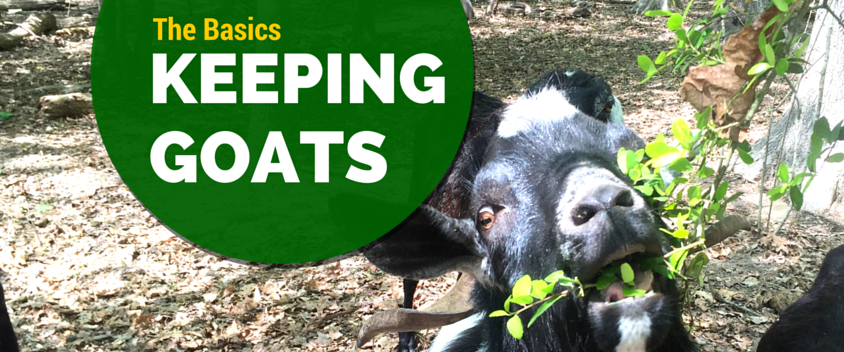 Keeping Goats – The Basics
Keeping Goats – The Basics
Thanks for joining me on another fantastic Friday! Hopefully I have another cool topic that lots of people want to know about, I know a lot of you will likely be interested in my thoughts on keeping goats, so I figured we would cover some of the basics here today. We can get into specifics about dairy goats and meat goats in a future show if you guys seem interested but for now I think just covering the basic care and needs will be pretty cool.
News
Now for some news! A ton of my stratified seed are germinating, I have apple, peach, elderberry and all sorts of things sprouting so as soon as I get this episode finished, I’ll be potting up and planting out thousands of plants. It’s going to be a ton of work but I’ll have a huge jump start on my nursery and getting the land planted with tons of rootstock for field grafting later on, and lots of fruiting plants. As well as getting my seedling selection programs and breeding programs off to an amazing start. I can’t wait to offer selected plants I’ve bred myself, southern adapted and disease resistant cultivars! Exciting stuff!!
Plant of the Week
Plant of the week is Elderberry! Sambucus nigra and Sambucus canadensis are the species I am talking about today. They are used worldwide extensively as cold and flu remedies and in my personal experience help tremendously. I think they are a fantastic medicinal plant as well as being a great jelly fruit. It’s seriously one of my favorite jellies and I don’t like jelly normally. If you’ve never tried it, you really need to try it. Super bold dark fruit flavor, amazing!
It’s a very easy plant to propagate from root cuttings and stem cuttings both softwood and hardwood, but since the hardwood cuttings are so simple, and so are the root cuttings, those are the ways I suggest you try to propagate this fantastic plant. Birds will love it and if you’re not careful they will take all your berries. The fruit is non-toxic, but the stems and leaves are. So don’t go eating the stems and leaves. And as a side note, I am doing a lot with black elderberry varietal selection this year and I hope to have some special cultivars to offer next year. So stay tuned for that if you are interested.
Interesting Stuff
My thought for the day stems from a recent conversation I had with a friend of mine. We were talking about the economic uncertainty in the USA right now and lots of people being afraid of where things were going, and what we can be doing to prepare ourselves to not only survive any economic downturn, rebasing, or collapse. He brought up the Great Depression, and how there were lots of people who prepared to thrive in that time period. They were set up and capable of providing jobs to hungry people. They thrived because they were able to feed and provide for their families and were able to pick up businesses, buildings, land and resources when money was scarce and prices were low. And that folks is exactly what I advocate, and what I am working towards on our homestead. If times are great, we will be able to live frugally and eat better than 90% of Americans. If times get hard or really tough, we will not only survive, but we will be in a position to grow our holdings and expand to produce more than ever before. So I just wanted to share that perspective and thought process with you today. Hopefully most of you are already thinking like me, if not, maybe I gave you a different way to think about things, or maybe I encouraged you with confirmation that what you are doing is the right thing to do! Either way…
Topic of the Day
Let’s get on to the topic of the day! I figured you guys might be a little interested in keeping goats on your homestead. Lots of questions on this topic, I did a show with Jack Spirko maybe last year on goats for the homestead. We’re going to cover
- Benefits and Behaviors
- Controlling Behavior
- Fencing
- Housing
- Feed
- Minerals
Benefits and Behaviors
Why in the world should or would you want goats? Well they are a great asset if you have need for them, and they can be a great help to accomplishing lots of work for you. They can also destroy everything you’ve worked hard for if not managed right. Just like a rifle, it can be used for good or evil, and fire which can save your life with it’s warmth, or kill. We need to be mindful of the fact that they are animals that can eat a lot very quickly and if that means they are eating weedy tree species, wild rose, blackberry, and everything thorny you can imagine, then they are a great tool and will save you so much time and effort. I think they are probably the single most beneficial tool in the hands of someone using them wisely when it comes to clearing weedy and overgrown forest, regrowth forest, and dilapidated or otherwise neglected pasture. I have been using them for several years now on our land to clean up our forested areas so that we can not only see, but walk through areas that were otherwise impassable.
Seriously, you couldn’t see ten feet in any direction 5 years ago. Now our forests look better, we have actually really nice looking woods. All we need to do now is clean up fallen and rotting wood to build woody beds and we should have a forest that looks like a park. So if you have overgrown forests and don’t like slinging a machete till your arm falls off, you might consider having goats do the work for you.
Controlling Behavior
But I would be remiss if I didn’t talk about controlling their behavior. Because these animals are so good at stripping trees of their leaves and bark, we definitely don’t want to let them anywhere near our precious fruit trees at all! Now don’t worry too much about them stripping the bark from larger trees in your forest. They however do really seem to like bark from cedars, and maples and will probably strip the bark from those at every chance especially cedar. One of the coolest things is that if you are able to train your goats well enough you can actually run fence around an area you want them to eat down and they will stay in the space you want them with nothing more than some masons twine. Now I don’t suggest doing this normally. But in a pinch you can run a few strands of white masons twine like your normal electric fence would run and they will avoid touching it just like normal electric fence. You can also use it with light portable step in posts to set up a temporary alley to move the animals a longer distance from one fenced area to another without using any real electric wire. It’s just a cool little tip that can really save your bacon. It also works as a temporary visual and psychological barrier in the event of a fence going down or breaking. I always have some masons twine on hand in case I ever need it. But in all my years of tending and keeping goats, the most valuable tool for controlling their behavior is definitely a good electric fence charger. You want the best and highest voltage energizer that you can afford, and when it comes to skimping on costs, your energizer is not the place to skimp, it’s the last place you want to cheap out.
Fencing
So as for controlling destructive behavior, the best thing you can do is have good fencing. So, let’s cover electric fencing options. For the Cadillac fencing option, I’d have to go with a 9 strand high tensile fence with fiberglass drilled posts. It’ll handle a tree dropping on it without any problems, you never have to worry about the insulators breaking because the wire is installed directly in the post.
The step down, and what I use for all my paddock cells is 4 or 5 strands of poly wire. This is a poly twine type product with multiple tiny steel strands of wire woven into the poly strands. It’s quite flexible and I love it for it’s lightweight nature and the ability to stretch it nice and tight to run longer distances without posts. And posts are one of the more expensive components to the fence for sure.
The best solid fencing you can use in my opinion is going to be a 12 ½ gauge woven wire horse fence from a company like red brand. Horse fence is 2” by 4” openings, I don’t get any money from anybody yet, but even if I did, I’d still tell you what I thought was the best fence.
Next best would be goat fence, which is going to be 4” square woven wire mesh, and I always recommend having a couple strands of electric fence and I’ll cover that in a minute.
Or you can step down to what I suggest for most people which is a woven wire cattle fence with a couple strands of electrified fence wire. This is much more affordable than the other fencing options and most often falls within the price range of my clients. It’s what I have on my perimeter fence. This has graduated spacing of the horizontal wires and it normally goes from 2” spacing at the bottom up to 8” spacing at the top. You definitely don’t want to use this as a standalone fence option for goats because they will get their heads stuck in it if you don’t use electric to bolster its effectiveness.
So for adding the electric fence component to your solid perimeter fence, you will want to put at least a single strand of electric at the animal shoulder height. This will prevent the animals from rubbing your fence, and you really, really don’t want them to rub the fence, or climb on it. So if you don’t add the electric, they will definitely rub and climb on your fence and I’ve actually seen places where they’ve been able to tear the fence down when enough of them get on it at the same location trying to reach an overhanging limb. So put that strand of electric and ensure the animals won’t ever want to touch your perimeter fence. It will save you so many problems you don’t even know!
Housing
Goats need little in the way of housing. At bare minimum, they need some place to get out of the rain and wind. A three sided structure with a dry floor is all they really need. I say to make sure the place you set their structure is in a place that water will not want to flow through or puddle. You don’t want the goat’s bedding to get wet, or for them to have to huddle standing up all night and all day because it’s raining for a long time. It is best to have the opening of the structure facing the direction that only the rarest of weather events come from. So the leeward side of your dominant winds. As for space I would say the average goat should get at least eight square feet of floor space to lay down at night and to get out of the rain. You can get away with less, but it may stress the animals and you might have one or two get bullied out into the weather at one point or another.
Feed
For the most part goats are going to want brush and tree leaves to eat, they also very much enjoy good pasture. So brush, grasses, forbs, and they love things that are thorny. The reason those things are thorny is because they taste good, and goats know it! So make sure they have plenty of green stuff to eat. I like to make sure they always have hay available, it’s just a good idea to have it there in case they get hungry and need something more than what they have available. It might save some of your trees from getting stripped of bark because a goat is super hungry.
For supplemental concentrated feed, you can use something like all grain sweet feed and alfalfa pellets. That’s what I use for my lactating does and whenever I need to improve body condition in any of my animals. Generally during the winter I will feed them some sweet feed with alfalfa and free choice hay. This kind of maintenance is generally the easiest for most people to manage and maintain. So if you are just starting out with goats, this is generally how I suggest you feed. You can get into higher level care and feeding later. I am working towards becoming largely feed independent but it’s really hard to achieve and definitely not something you need to worry about right off the bat.
Minerals
Last but not least we need to talk about minerals for your animals. I like to make sure my animals always have access to free choice mineral blends. If you can get a multiple mineral feeder here are the ones I like to keep available.
- A good loose mineral salt blend – This is a good thing to have just because it has most of the major minerals they need and is generally quite palatable. (I use one from my local feed store Right Now Minerals Onyx)
- Dolomite Lime – is a great source of both calcium and magnesium, and I’ve been told the animals will eat a bunch of it if they eat something toxic.
- Plain Sea Salt – The plain sea salt is a fantastic thing to have available to your animals because it has tons of trace minerals that they really need as well as salt, calcium, magnesium and iodine.
- Baking Soda – This is good to have available because it’ll help to balance out the rumen pH and if they are experiencing early symptoms of bloat they’ll normally eat a bunch of it and it helps to prevent and fix bloat problems.
- Kelp Meal – Another great mineral source and popular supplement for boosting health and milk production.
I like having all those available because the animals will intrinsically know what they need and will be able to pick out specific supplements as needed.
Contrary to popular opinion, goats can be quite picky and will not eat things that have fallen on the ground or are touching manure unless of course they’re really hungry. So you need to make sure you don’t just dump all your minerals in the feeder and let it be. I suggest adding only enough that they will eat in a couple days to avoid wasting it. The minerals and such will cake up, and get moist quickly, especially the baking soda, then they will turn their noses up at it and won’t use it. Also, make sure you put the mineral feeder somewhere they can’t stand in it or turn their tail end towards it because they will drop manure into it. It’s so frustrating!
Quickly, a note about copper. You can tell easily with darker colored goats when they aren’t getting enough copper in their diet because their coats will develop a reddish tint to the hair. If your goats are black or have black in their coats and they start looking reddish, you might want to check the copper levels in your mineral blend to ensure they are getting enough. Sheep will die if given mineral blends high in copper so be careful about adding a goat mineral if you already have sheep.
————————
So there we go, a nice little primer on keeping goats for all you Homegrown Liberty listeners.
Remember that goats can be a great help when you need to clear regrowth and brush. But with that power comes the danger of overgrazing and destruction. Goats will use either side of their hoof to straddle small trees and will walk the tree over till the branches are low enough for the rest of the goats to reach, then they will all jump up and pull the tree down to the ground where thirty seconds later it’s broken and stripped of all leaves and small twigs.
It’s pretty cool when it’s a sweet gum or cedar that you want gone, not so cool when it’s an apple tree. So make sure you have good control with good fencing and a powerful fence energizer with really good grounding. Make sure they have a decent shelter and can get out of the sun and rain and have a dry place to sleep. If you can set up rotational grazing that will be the best thing for them both in building fertility and life on your property as well as helping to break parasite life cycles. And make sure they always have some good minerals available. That just about wraps things up!
Thank you so much for reading!
Sign up for my mailing list on the webpage if you want the inside track on when I’m going on the next consulting tour as well as event and appearance news.
Until next week
I hope you have a wonderful day, God Bless. And as always “Go Do Good Things”




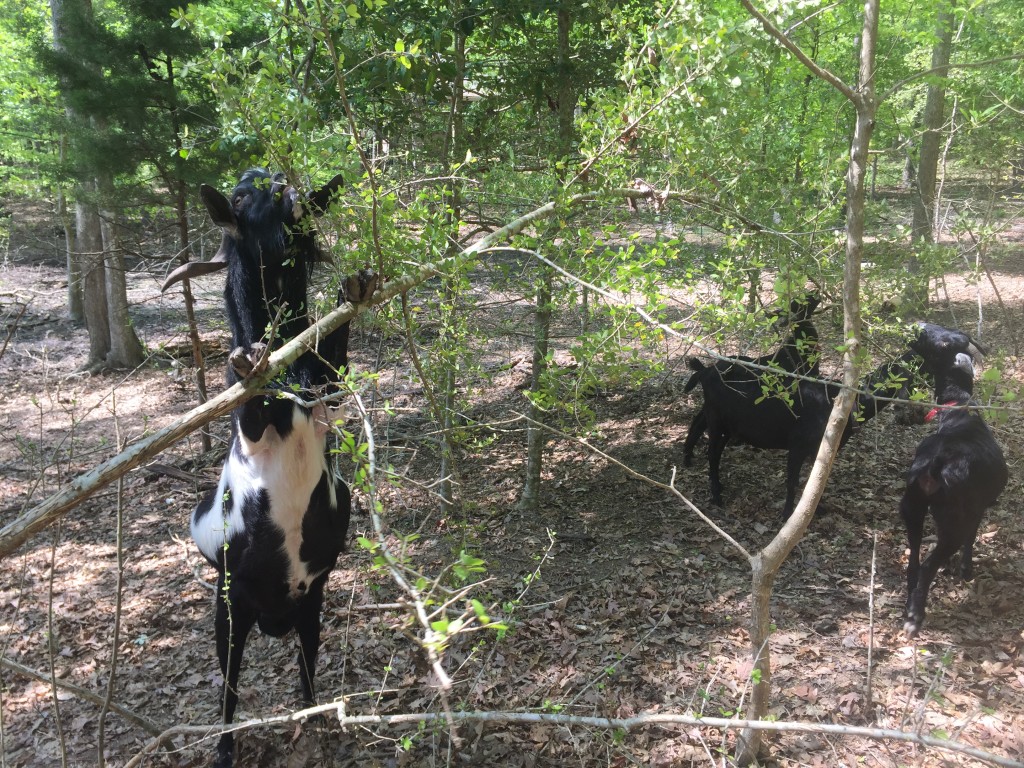

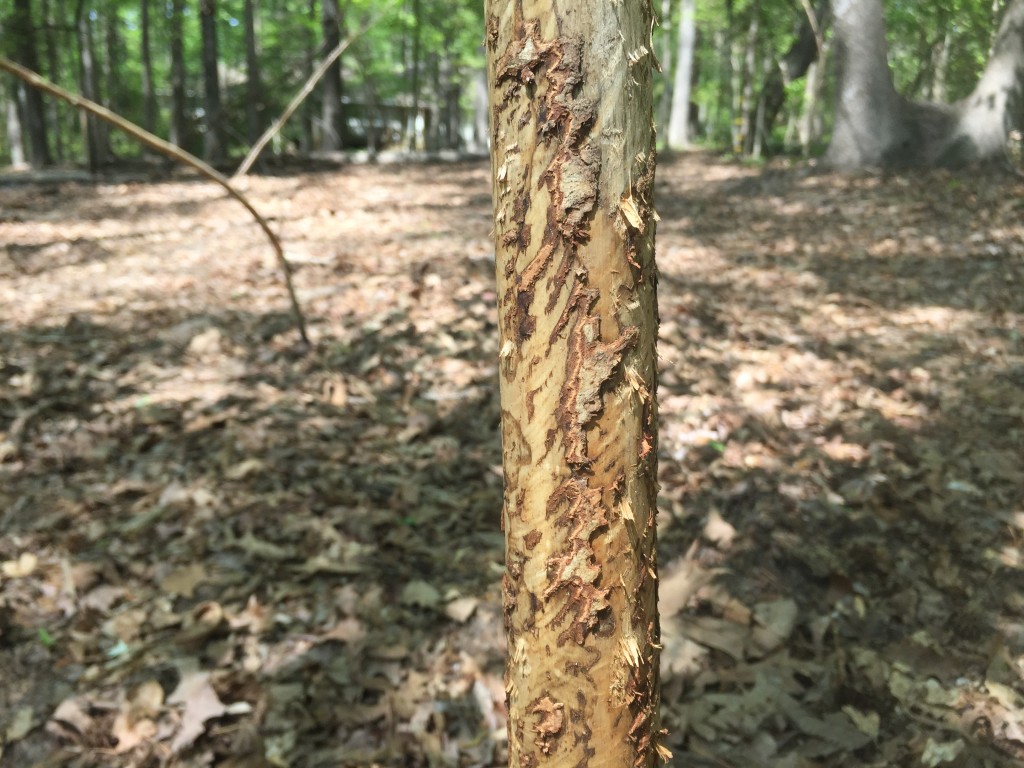
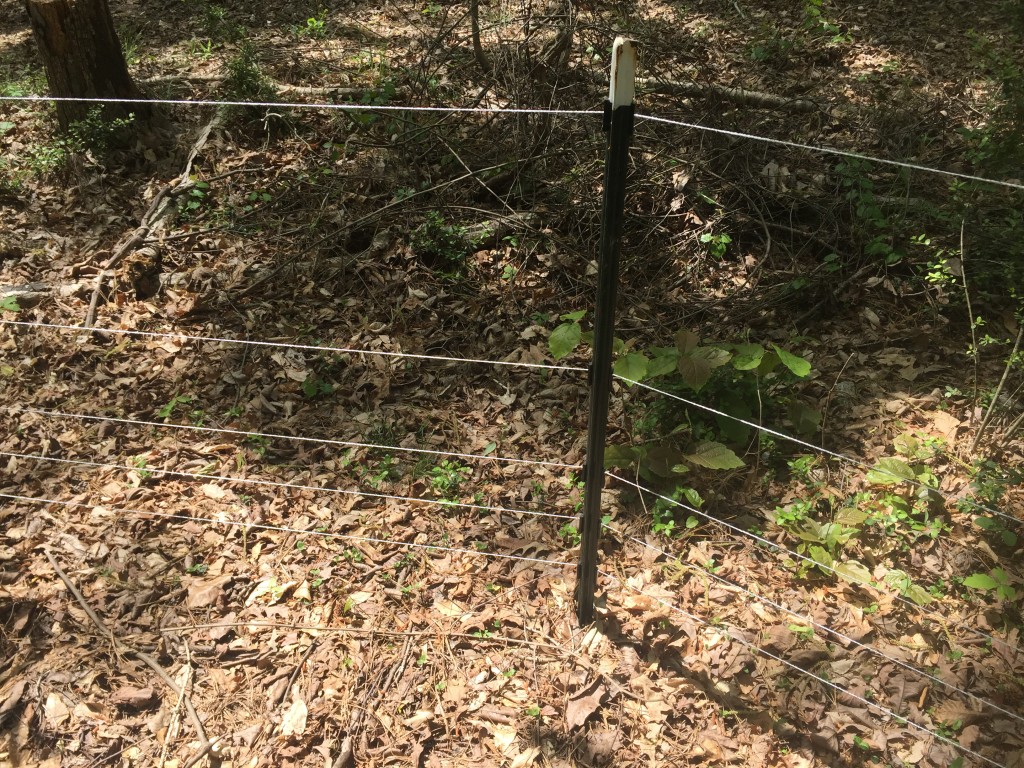
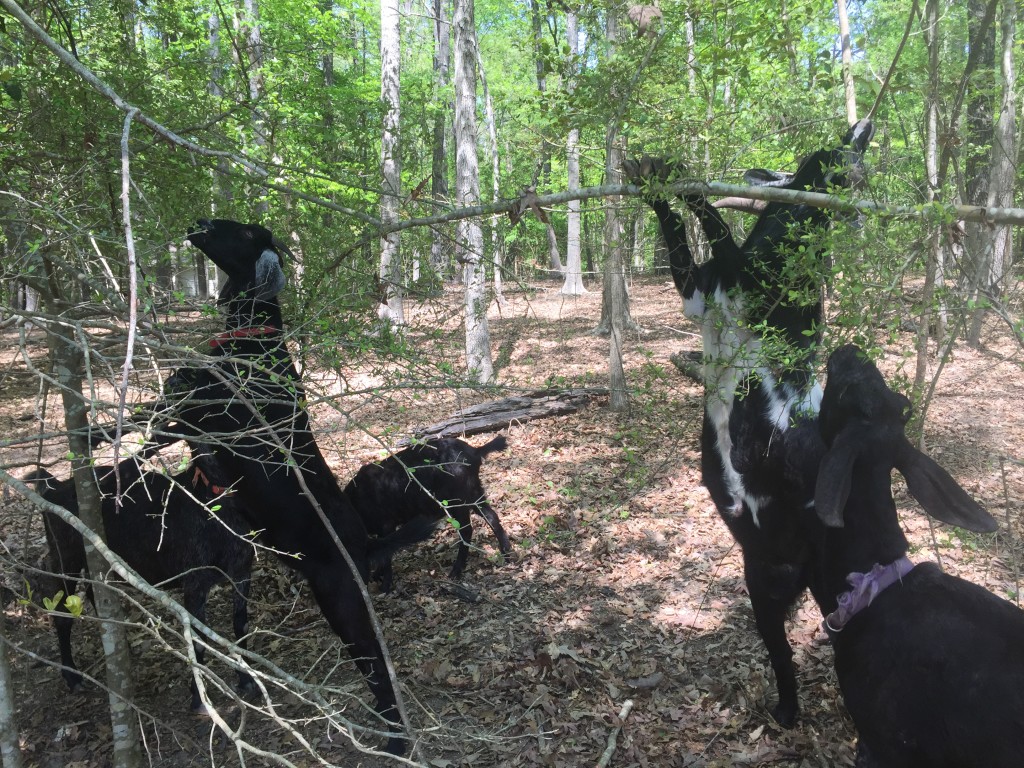

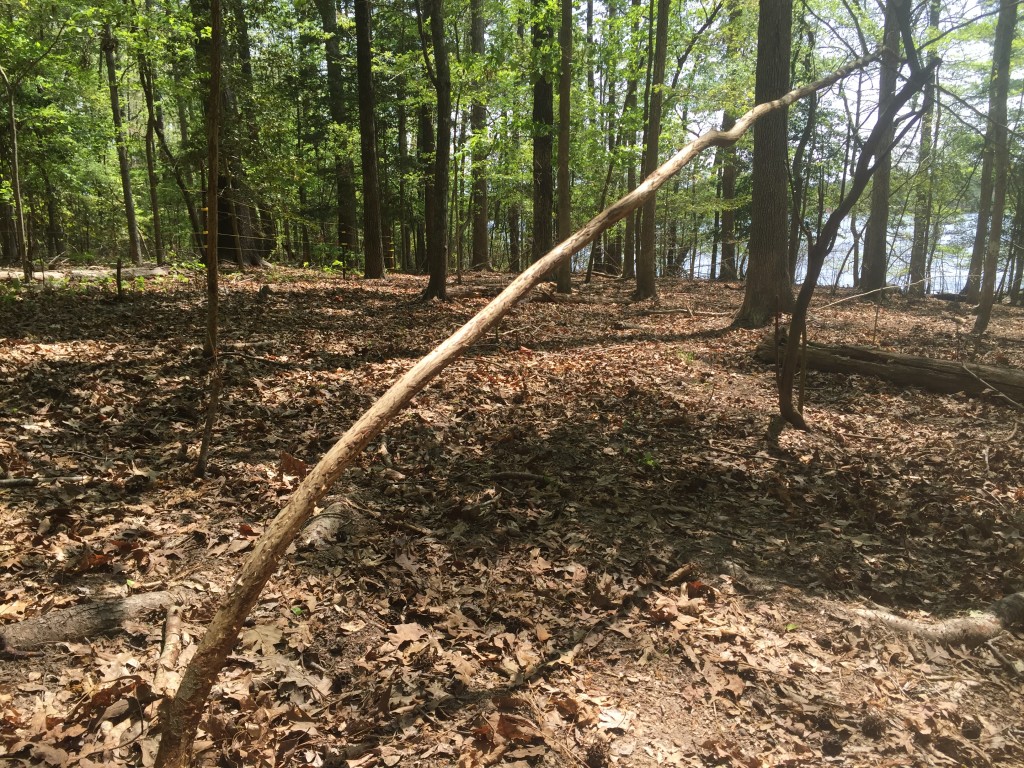
Enjoyed this podcast, I have had goats now almost 3 years now and agree with you. They are cleaning up my property as well providing fertilizer. I didn’t know about the baking soda as free choice so I will try that. I just have out mineral blocks now. I always look forward to your next show so please keep it going because your work inspires me to try new techniques and keep going despite setbacks.
Thanks Mike! It means a whole lot to get encouragement like this. Keep doing good things!